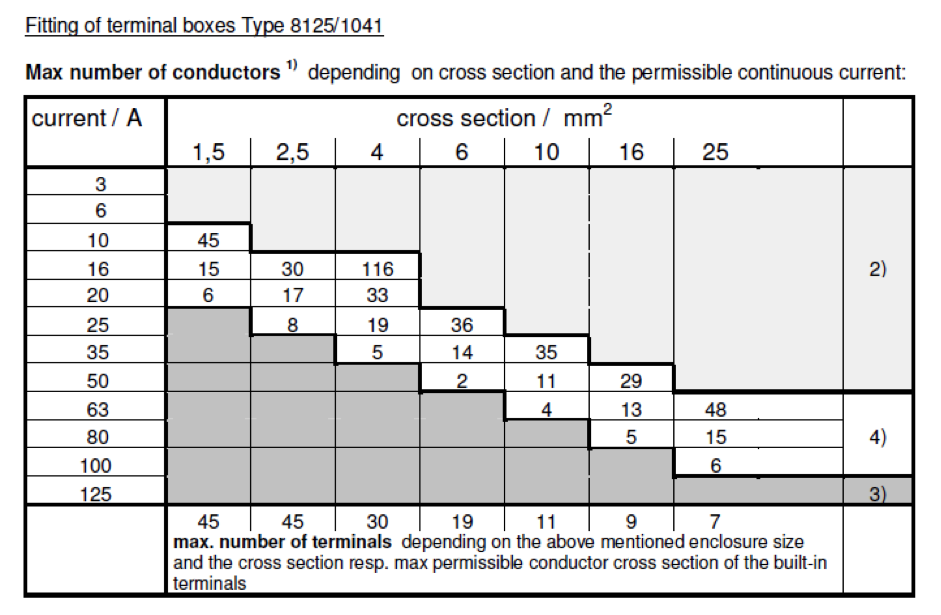The 20-Second Trick For Roar Solutions
The 20-Second Trick For Roar Solutions
Blog Article
Rumored Buzz on Roar Solutions
Table of ContentsSome Of Roar SolutionsNot known Details About Roar Solutions An Unbiased View of Roar Solutions
In order to safeguard installments from a possible surge a technique of analysing and classifying a possibly unsafe area is needed. The objective of this is to make certain the correct choice and installation of devices to eventually avoid a surge and to guarantee safety of life.
(https://www.cheaperseeker.com/u/roarsolutions)
No equipment must be installed where the surface area temperature level of the devices is more than the ignition temperature of the given hazard. Below are some usual dirt unsafe and their minimal ignition temperature. Coal Dirt 380C 225C Polythene 420C (thaws) Methyl Cellulose 420C 320C Starch 460C 435C Flour 490C 340C Sugar 490C 460C Grain Dust 510C 300C Phenolic Resin 530C > 450C Aluminium 590C > 450C PVC 700C > 450C Soot 810C 570C The possibility of the danger existing in a focus high adequate to cause an ignition will vary from location to place.
In order to classify this threat a setup is separated right into areas of danger depending upon the quantity of time the dangerous exists. These areas are referred to as Areas. For gases and vapours and dusts and fibers there are three areas. Zone 0 Area 20 A dangerous ambience is extremely likely to be present and may be present for lengthy durations of time (> 1000 hours per year) and even continually Area 1 Zone 21 A hazardous ambience is feasible yet unlikely to be present for extended periods of time (> 10 450 C [842 F] A category of T6 suggests the minimal ignition temperature level is > 85 C [185 F] Hazardous area electric devices possibly developed for usage in greater ambient temperatures. This would suggested on the ranking plate e.g. EExe II C T3 Ta + 60C( This indicates at 60C ambient T3 will not be gone beyond) T1 T1, T2, T3, T4, T5, T6 T2 T2, T3, T4, T5, T6 T3 T3, T4, T5, T6 T4 T4, T5, T6 T5 T5, T6 T6 T6 A T Class score of T1 suggests the optimum surface temperature produced by the tool at 40 C is 450 C. Assuming the associated T Course and Temperature level ranking for the tools are suitable for the area, you can constantly use an instrument with a much more rigid Department rating than required for the area. There isn't a clear answer to this question unfortunately. It actually does depend upon the kind of equipment and what fixings need to be performed. Tools with details test treatments that can not be executed in the field in order to achieve/maintain 3rd party rating. Need to return to the manufacturing facility if it is before the tools's solution. Field Repair By Authorised Worker: Complex testing might not be called for nevertheless certain treatments may require to be adhered to in order for the equipment to keep its 3rd party rating. Authorized workers need to be used to carry out the work properly Repair service must be a like for like replacement. New part need to be considered as a straight replacement requiring no unique testing of the devices after the repair work is complete. Each tool with an unsafe rating should be evaluated individually. These are laid out at a high level listed below, but for more comprehensive info, please refer straight to the guidelines.
Rumored Buzz on Roar Solutions
The tools register is a comprehensive data source of devices records that includes a minimum collection of fields to recognize each thing's location, technological criteria, Ex classification, age, and ecological data. The proportion of In-depth to Close evaluations will certainly be figured out by the Devices Threat, which is evaluated based on ignition threat (the possibility of a resource of ignition versus the possibility of a flammable environment )and the dangerous location classification
( Zone 0, 1, or 2). Executing a durable Risk-Based Evaluation( RBI )method is critical for making certain compliance and security in handling Electrical Tools in Hazardous Locations( EEHA).
6 Simple Techniques For Roar Solutions

In terms of eruptive danger, a harmful area is an environment in which an explosive ambience exists (or may be anticipated to be existing) in quantities that require unique safety measures for the building and construction, setup and use of devices. eeha courses. In this article we discover the obstacles dealt with in the workplace, the threat control measures, and the needed proficiencies to work securely
It is an effect of modern life that we manufacture, store or take care of a variety of gases or fluids that are deemed combustible, and a series of dusts that are considered combustible. These substances can, in specific conditions, form eruptive ambiences and these can have significant and heartbreaking effects. Most of us are familiar with the fire triangular remove any kind of among the 3 aspects and the fire Check This Out can not take place, however what does this mean in the context of unsafe locations? When breaking this down into its simplest terms it is basically: a combination of a certain quantity of launch or leak of a specific substance or material, mixing with ambient oxygen, and the visibility of a resource of ignition.
In the majority of circumstances, we can do little about the levels of oxygen in the air, yet we can have considerable influence on sources of ignition, for instance electric tools. Unsafe locations are documented on the unsafe area category illustration and are determined on-site by the triangular "EX LOVER" indication. Below, among various other essential info, zones are divided into three types depending upon the risk, the likelihood and duration that an explosive environment will exist; Area 0 or 20 is regarded one of the most dangerous and Zone 2 or 22 is deemed the least.
Report this page